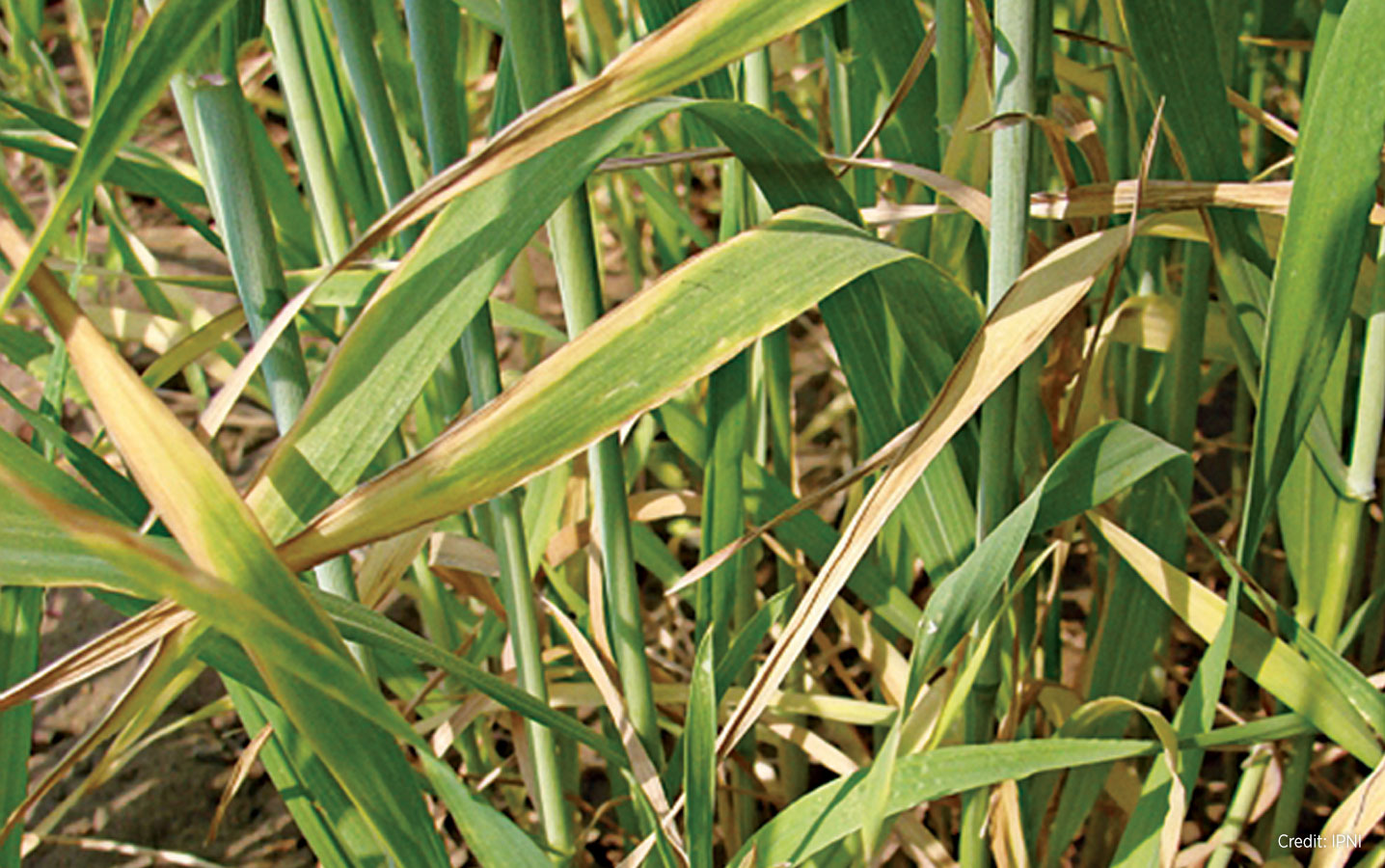Potassium deficiency shows first in cereals
Most canola crops grown in Western Canada are not short of potassium because most Prairie soils have sufficient potassium levels. Sandy soils with low clay content are most likely to be short of potassium, especially if those fields have been in forages where a large percentage of the biomass is removed each year.
Cereals in the rotation will show signs of potassium deficiency long before canola does. Cereal symptoms may start to show when soil potassium levels drop below 300 lb./ac., which is well above the critical point for canola.
Wheat with a potassium deficiency will have chlorosis on older plant parts, and leaves may eventually become streaked with yellow. This will look similar to some plant diseases, and in fact some wheat diseases are more common when potassium is deficient, according to International Plant Nutrition Institute (IPNI) resources. Any nutrition management measures that address potassium deficiency in cereals will likely also address any potential deficiencies in canola.
Canola rarely responds to applied potassium fertilizer, even under conditions where cereals normally respond. This is based on R.J. Soper’s research in Manitoba between 1961 and 1969. Soper’s results were published in Agronomy Journal in 1971, and they remain the definitive study for potassium fertilization of canola.
Soper concluded that canola would not consistently or economically respond to fertilizer potassium unless the soil test is very low — possibly as low as 70 lb./ac. (35 ppm).
Here is the entire section on potassium from Soper’s Agronomy Journal article:
“Rape responded significantly to added K in only 2 of 12 experiments. Nevertheless, there was an obvious relationship between exchangeable K as measured by NH4OAc and percent yield; a logarithmic equation gave the best fit for this relationship. From this equation, it would appear that rape would respond in yield to fertilizer K on soils which had exchangeable K contents of 200 ppm or less.
“However, the critical value seems to be lower since a significant yield response was not obtained on five soils which had exchangeable K values less than 200 ppm. Tentatively, it is suggested that a critical level of 100 ppm of exchangeable K be used to distinguish between sufficient and deficient soils with respect to their K supplying power for rapeseed production and a value of 35 ppm be used for predicting large yield responses.”
Crop nutrition experts believe Soper’s work is still relevant, given that soil test levels are unlikely to change much over time. Most potassium taken up by plants remains in the plant biomass, not the seed, and is returned quickly to the soil. Eroding clay particles restock available soil potassium levels.
When applying potassium fertilizer, note that the high salt index of potash limits the amount that can be safely applied near the seed. Most potassium-deficient soils are sandy, which increases canola sensitivity to seed-placed fertilizer. Put potassium fertilizer in a band away from the seed row.





